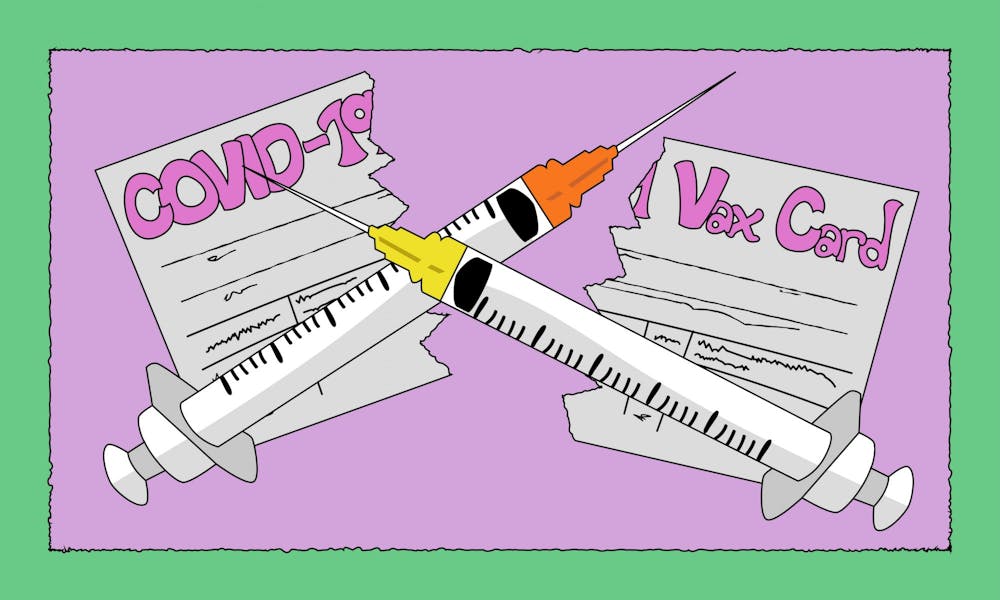As the COVID–19 pandemic rages on—growing worse with new variants—vaccinations are increasingly important to protect people from illness and death. In recent data released by the Kaiser Family Foundation on August 18, 72% of the US population has received at least one dose of a COVID–19 vaccine. However, of that 72%, 58% represents white Americans with only 10% of those who identify as Black Americans having received the vaccine. Although recent data reveals that recent vaccinations are occurring in the Black and Hispanic populations, there is still a glaring gap between white and Black vaccination rates.
There are many racist and ahistorical understandings of the vaccine hesitancy in the Black community—just look at Texas Lt. Governor Dan Patrick. It is vital to ground such a nuanced situation in history.
Even prior to the infamous Tuskegee Experiment, the Western medical community has experimented on enslaved populations around the world. Two of these doctors were John Quier and James Marion Sims.
John Quier, a doctor from Britain, performed heinous and horrific experimentation on enslaved people in the Caribbean. Londa Schiebinger, a scholar from Stanford, details Quier’s experiments through her research for her book, Secret Cures of Slaves: People, Plants, and Medicine in the 18th-century Atlantic World. Quier performed smallpox inoculation on a group of 850 enslaved people in Jamaica. Inoculation was a rudimentary vaccination technique that induced a light case of the disease in a healthy person in hopes of immunizing that person for life.
According to Schiebinger, Quier went beyond what his colleagues in Europe dared to. He inoculated pregnant and menstruating women, as well as newborn infants. More horrifically, however, was his blatant disregard for the wellness and wellbeing of those who were victimized by his experiments. He reportedly inoculated some patients several times at considerable personal expense.
Like Quier, James Marion Sims experimented on enslaved peoples, specifically enslaved Black women. Sims is a venerated figure in the Western medical community and is heralded as the “father of gynecology.” He is credited with the invention of the vaginal speculum and the treatment of a condition called vesicovaginal fistula (VVF). Sim’s findings came at an enormous cost for those he experimented on. He frequently experimented on patients without the use of anesthesia. Of the fourteen women he experimented on, only three names were found in his records: Anarcha, Lucy, and Betsey.
It is important to note that Sim’s non–use of anesthesia on Black women was founded on the racist belief that Black people could not feel pain. This is blatantly false as his records indicated that Lucy, only an 18–year–old girl at the time, screamed and cried during an hour–long surgery. Sims only began to use anesthesia on white women after he performed four years of horrific and immensely painful surgeries on Black women. Many medical professionals vehemently defend Sim’s actions to this day.
The Tuskegee Experiment is one of the most well–known and infamous examples of medical violence toward the Black community. The Experiment was sponsored by the United States government, specifically the Public Health Service (PHS). It was meant to last from six to nine months (but went on for forty years) and involved 600 Black men in total – including 399 men who had already contracted syphilis and 201 who did not have the disease.
The research intended to determine if the course of syphilis was different in Black men than white men, and whether syphilis led to more cardiovascular or neurological damage. The patients were not told they had syphilis, and were not treated. Instead, they were observed until their deaths even though penicillin, the cure for syphilis, became readily available in the 1940s. For 25 years, patients were denied penicillin. Black men went blind, became clinically insane, and eventually died.
It should also be known that the PHS did have a committee to determine whether the experiment should be ended, but they decided against it for the purpose of performing autopsies on the men who died from the disease. The study could have continued indefinitely if not for an exposé by The Associated Press. A PHS employee named Peter Buxton leaked the story to the newspaper, leading to public outrage. The study only ended in 1972.
These three incidents do not stand alone in the long history of victimization and violence inflicted by white medicine onto the Black community. The exploitation of Henrietta Lacks, the forced sterilization of Black people, and many other appalling moments have occurred in our country’s history. Knowing the reality of all these heinous actions taken by the medical community in the past, the Black community’s mistrust of medicine appears to be justified.
Although this hesitancy is justified, Black people, in addition to Indigenous and Pacific Islander Americans, have experienced the highest death tolls from COVID–19. Not taking vaccines is increasing health risks for the Black community, but the solution to the vaccine hesitancy is not a brutish technique that forces the Black community to trust a field that has subjected Black people to extreme violence without remorse.
Instead, transparency, understanding, and compassion are the way forward. The key scientist behind the COVID–19 vaccine was Kizzmekia Corbett, a Black woman. The vaccine’s first recipients were Black people. Emphasizing the safety and inclusion of Black scientists in the vaccine is imperative to openness.
However, facilitating trust in the vaccine may not remediate all of the discrepancies in the field of medicine. There are still many severe disparities in medicine for Black people. Black children are more likely to get asthma. Black mothers are two to three times more likely to die from pregnancy–related causes than white women. Half of residents and medical students still believe that there are biological differences between Black and white patients, especially in how patients feel pain.
The good news is that COVID–19 vaccinations are rising in the Black community. However, boiling down all vaccine hesitancy into anti–vaxxer commotion is a disservice to the reality of the history of medicine in the United States.







